How To Fix Unrecognized USB in Projectors: 3 Tested Techniques

What To Know
- Ensure your USB flash drive is formatted in a format compatible with your projector, such as FAT32, and within the maximum supported capacity.
- If the projector doesn’t recognize the USB drive, inspect the projector’s USB port for damage or debris, and consider testing with a different USB drive.
- Regularly check and install firmware updates for your projector to maintain compatibility with newer USB devices.
In this article, I’ll show you three tested methods to solve the problem of your projector not recognizing a USB drive.
Let’s get started!
Quick Navigation
1. Check the USB Flash Drive Compatibility
Your projector will fail to detect your USB flash drive if the latter uses an unsupported file format.
I encountered this issue with my BenQ MH680.
The quandary came to light posthaste after I formatted my USB memory stick in the exFAT (Extensible File Allocation Table) file system.
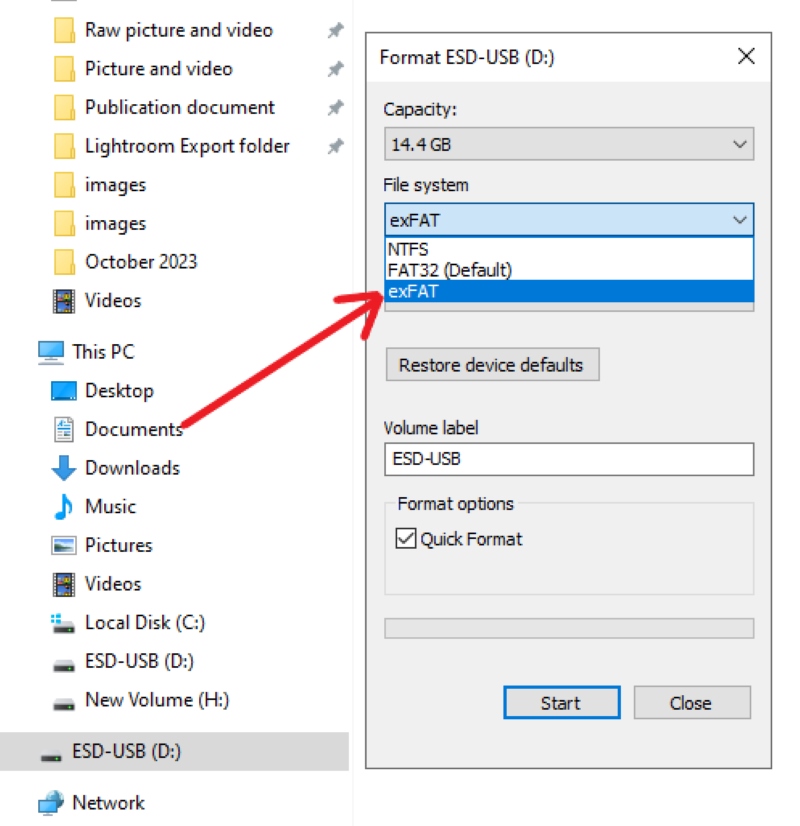
In case you didn’t know, exFAT is a modern, lightweight file system optimized for USB flash sticks, SD cards, and other flash memory devices.
When I inserted the USB flash drive into my BenQ projector, I received the “USB Reader No Signal” message, as shown below.
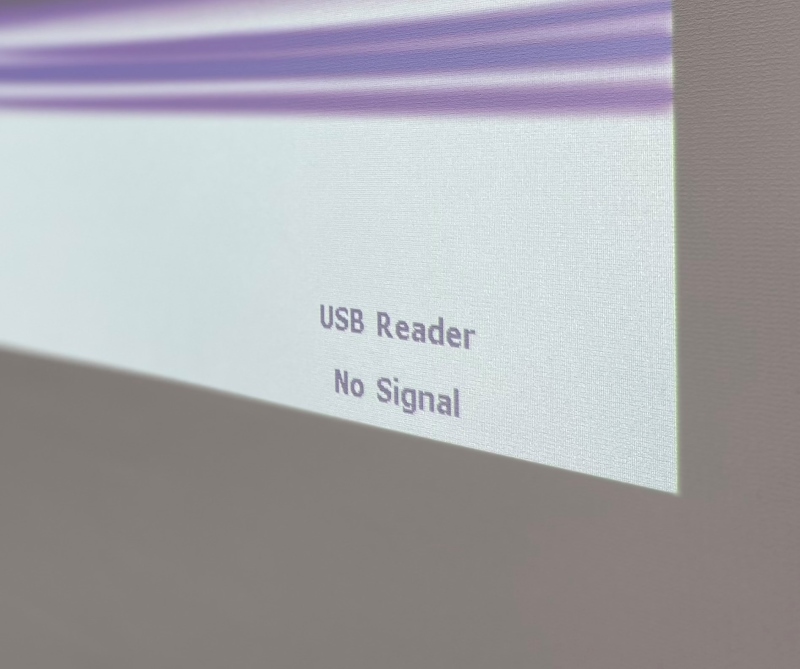
Realizing my mistake, I changed the USB drive’s formatting to the FAT32 (File Allocation Table 32) file system and again plugged it into my projector.
This time, my BenQ detected the USB stick.
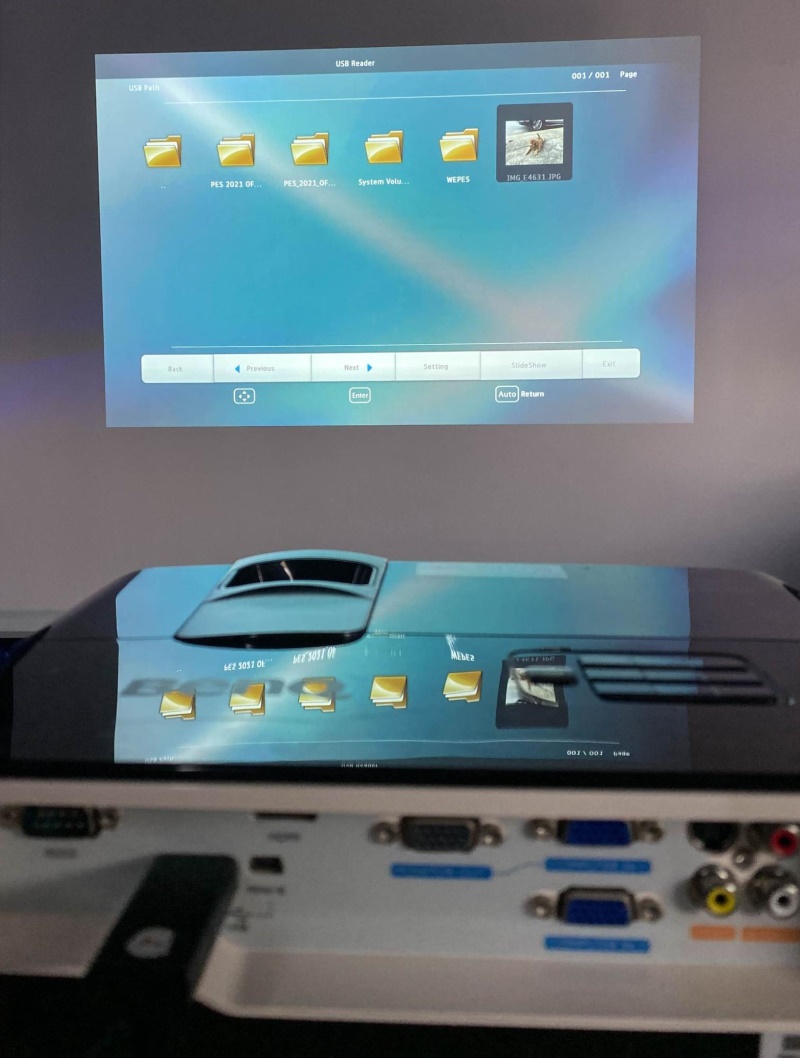
My BenQ projector clearly wasn’t compatible with my USB stick’s exFAT file system.
Note that this compatibility concern transcends the BenQ projector landscape, having also trapped Epson projectors, for instance.
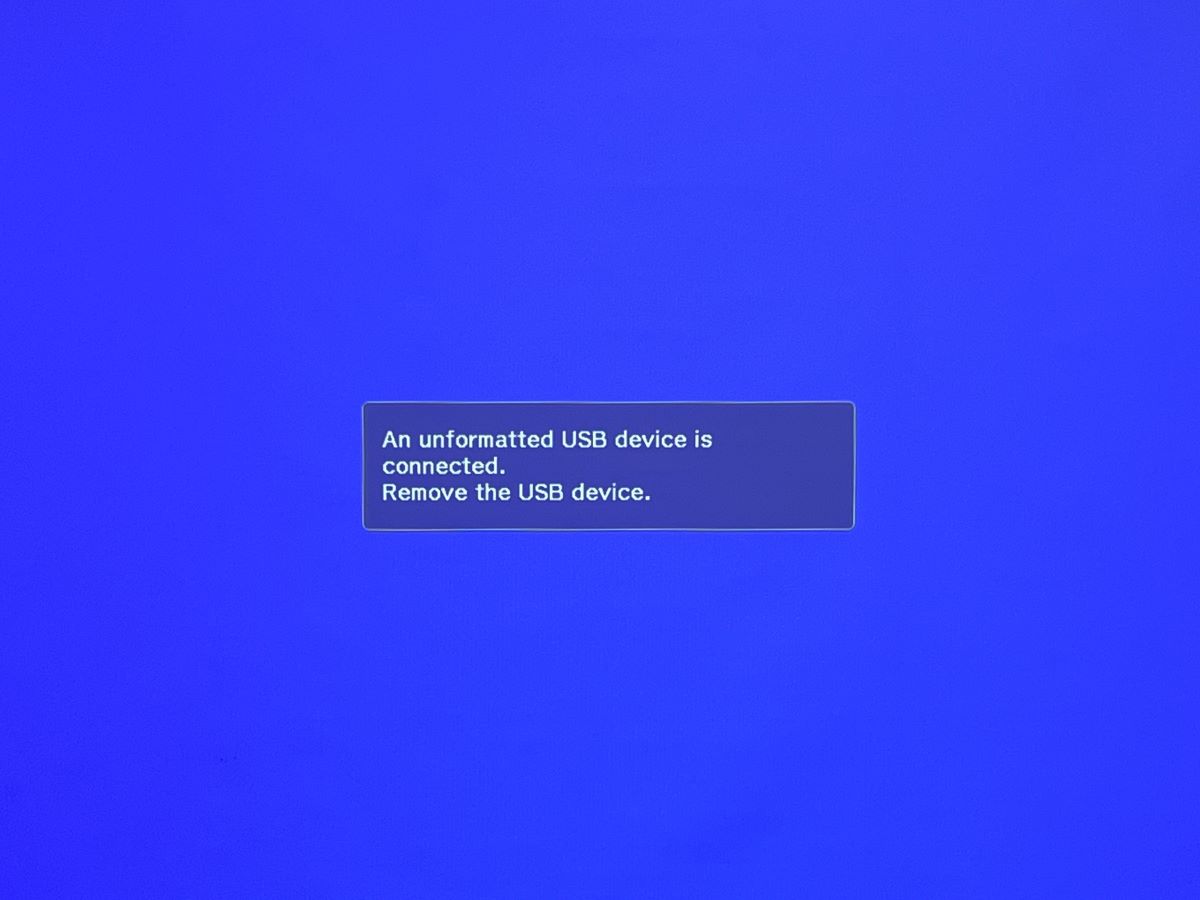
The issue is brand-agnostic since it only concerns the file systems at play and their nuanced intricacies.
If you have an Epson projector facing the same USB drive format issue, click here to learn about the issue and rectify it.
Long story short, always ensure the file system your USB memory stick employs matches the projector.
A Short Intro to FAT32 and exFAT
In the USB file system landscape, the FAT32 format is usually more ubiquitous or recommended since it’s compatible with an array of devices—projectors, cameras, music players, etc.
However, FAT32 has an individual file size limit of 4GB, a likely stumbling block for several capacious multimedia undertakings.
Multiple files stored on a FAT32 USB flash drive can exceed 4GB in size, but no single file can be 4GB or more.
On the same lines, specific projector models could have a threshold for USB drive capacity—for instance, no bigger than 128GB.
The exFAT file system was developed primarily to skirt the FAT32 size limit and other restrictions.
And its compatibility is as widespread across devices and platforms as its predecessor.
So, how do you format a USB drive or change the file system to FAT32 from exFAT? Here are the step-by-step instructions.
How to Format a USB Flash Drive Properly
You’ll need a laptop or desktop computer for this.
Step 1: Turn on your computer. Insert the USB stick into one of its ports.
The window with the USB drive’s contents shall open automatically.
Feel free to close the window, as you won’t need access to the drive’s contents.
And since formatting erases the drive’s data, back them up.
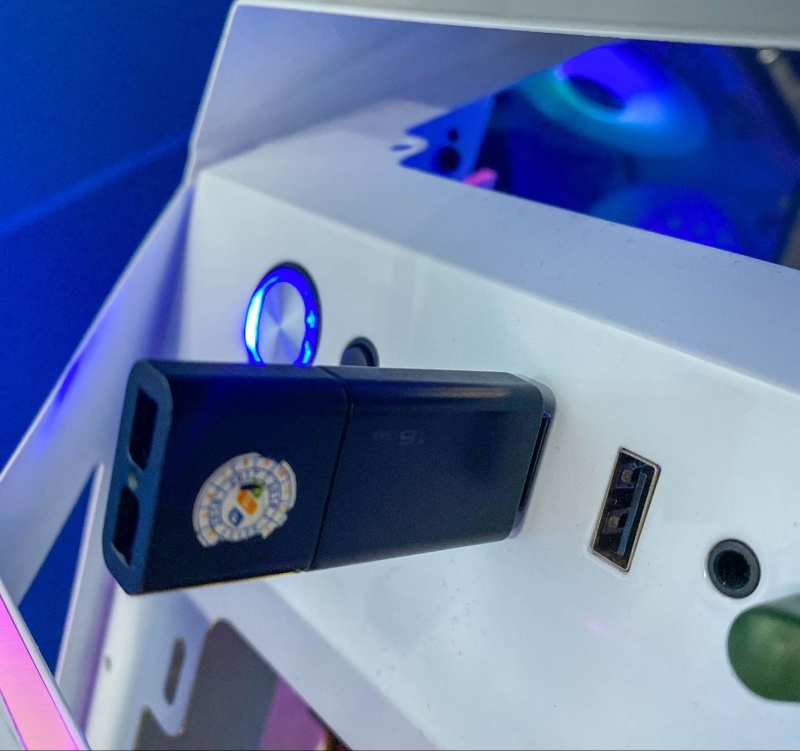
Step 2: Look for the USB memory drive icon in the File Explorer app, or the Home page of your file manager app.
If you don’t readily see the drive icon on your screen, click on This PC app.
Once found, right-click the flash drive sign and choose Format.
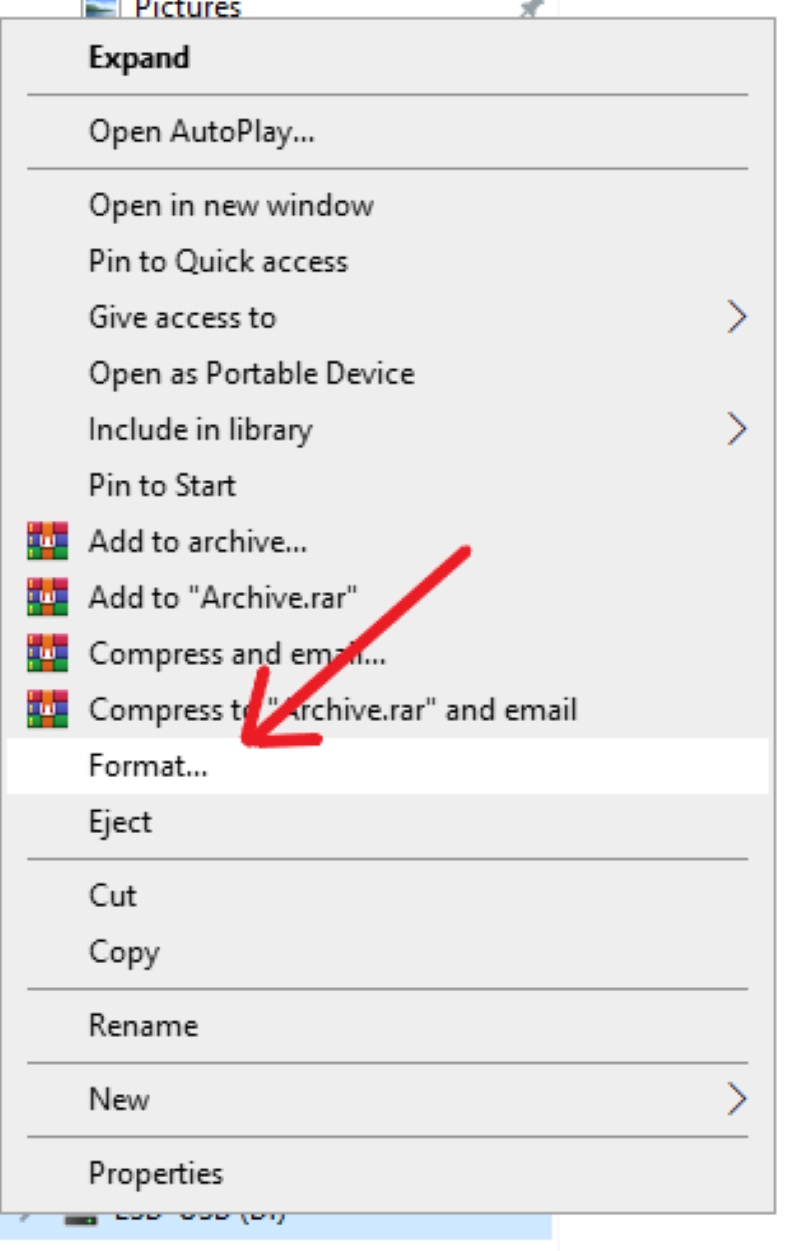
Step 3: Under File system, choose FAT32 (Default).
Don’t change anything else.
If you want to change the USB drive’s name, type in the new name under the Volume label section.
Also, ensure the Quick Format box is checked, if not by default, for speedy formatting.
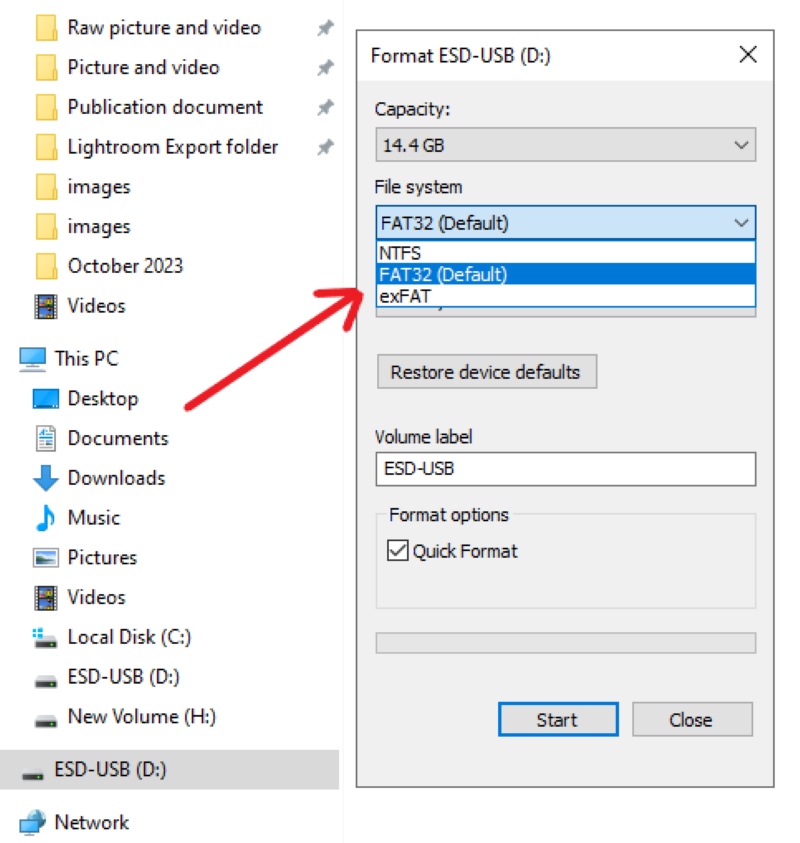
Step 4: Once done, click on Start to start formatting.
A warning window may pop up, indicating formatting will delete all information on the drive.
Click OK to proceed.
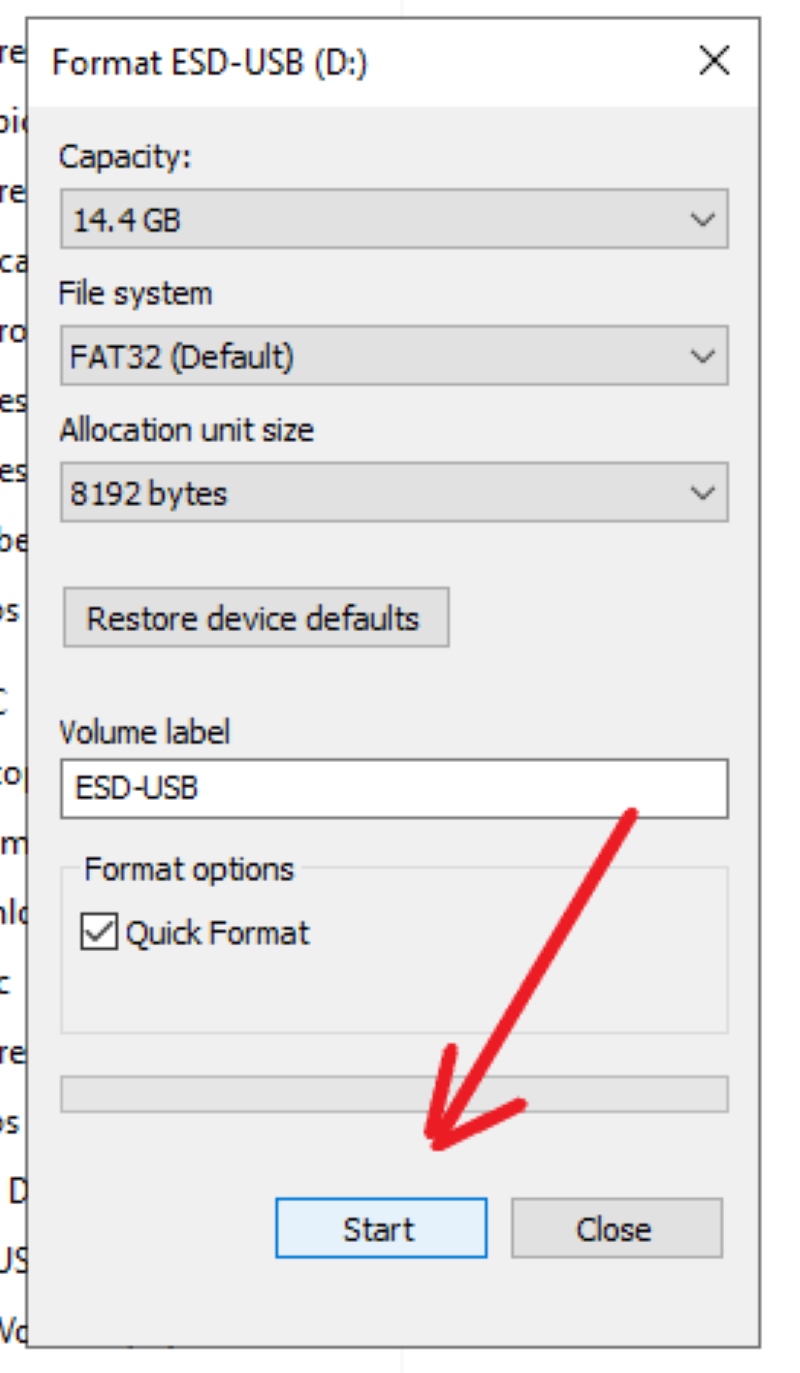
The formatting should be complete within a flash or under a minute.
Once the Format Complete window appears, click OK and close the Format Drive window.
2. Inspect the USB Port on the Projector
If you’ve properly formatted your USB flash drive, but your projector still fails to recognize it, the issue could be the projector, not the memory stick.
Inspect your projector’s USB port for dirt, debris, or physical damage.
Also, check the USB cable connector. It could be broken.
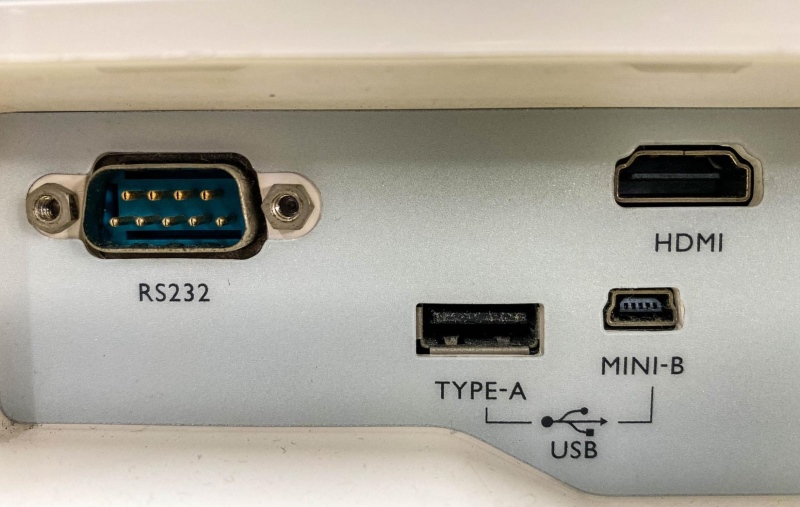
If the preliminary checks clear the projector port, use another port on the device.
If the connection goes through, the previous port is likely faulty.
Another way to rule out wrongdoing on the USB stick’s front is to connect the projector to another flash drive.
If the two communicate fine, the original USB stick is possibly at fault.
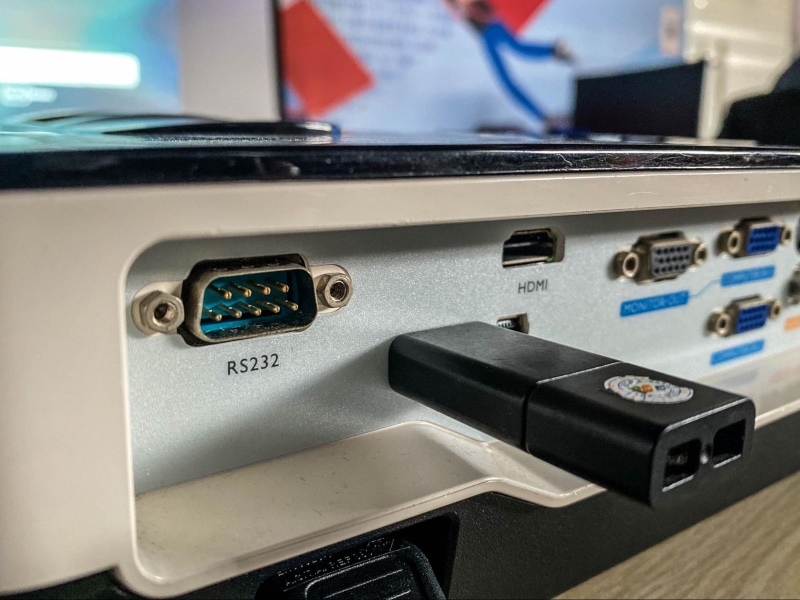
3. Update Projector Firmware
Updated firmware is the bedrock upon which changes or progress shall be made.
If the software is antiquated or infested with bugs, the adjustments done atop it may not bear fruit.
Specifically, lagging firmware could experience compatibility problems with external devices, such as your USB flash drive.
It won’t be incorrect to opine that working with outdated firmware is like painting a wall with cracks.
The final result will never be satisfactory.
So, always ensure your projector firmware is current.
If you have a BenQ projector and want more details on updating its software, click here to read our comprehensive write-up on the same.
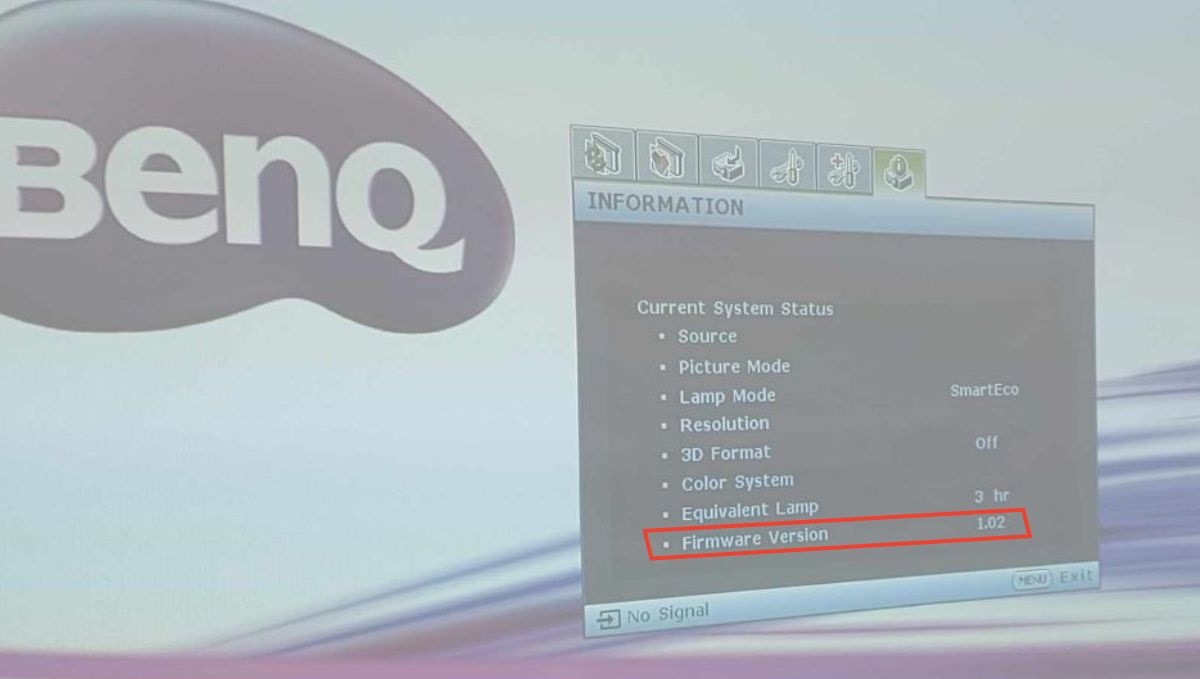
You can also browse the web for an instructions guide or manual specific to your device’s software.
Last Things to Try
Here is a list of things you should do before giving up on your projector and/or the USB drive:
- As alluded to earlier, use the USB drive with another device, such as a computer. If detected, the flash drive is clearly functional. Maybe the issue lies with the drive’s settings or compatibility with the projector.
- If the memory stick is detected, but the space on offer is less than claimed, the USB drive likely has some serious concerns.
Note that it’s normal for the space provided on a USB stick to be a few hundred MBs less than advertised, such as 7.45 GB on an 8 GB stick.
However, things become worrisome if the space available to the user is more than a GB or two less than the claimed capacity.
To check usable storage information, right-click the flash drive icon and choose Properties. Select Get Info if using a Mac.
- Do a soft reset. Turn off your projector and undo its power cord. Unplugging the device ensures no residual current flow within the device. Wait a minute or two before plugging and turning on the projector again. This troubleshooting technique helps resolve all fundamental issues or temporary glitches with the projector.
- Grab your projector user manual. Look for instructions and tips regarding setting up and troubleshooting a USB device. Perhaps the manual contains USB connectivity information unique to the model.
Bonus: The Projector Cannot Read or Play Files on the USB Drive
If you’re trying to play video or view images on the USB drive using your projector, ensure the media type on the flash drive is compatible with your projector make and model.
Projector brands and models exhibit a discerning palate for particular file types concerning videos or pictures on a flash drive.
The varied support denotes the projectors’ distinct capabilities for handling or playing multimedia content.
Some projectors may only support video or image files.
My BenQ MH680, for example, is compatible with only picture files in the JPEG, PNG, BMP, TIFF, and GIF formats.
And the files must be less than the WXGA (1280 x 800 pixels) resolution.
Pictures with greater resolutions won’t display correctly or must be downscaled to the device’s inherent resolution.
When I tried displaying a TIFF picture on my BenQ, it displayed the error message as shown below.
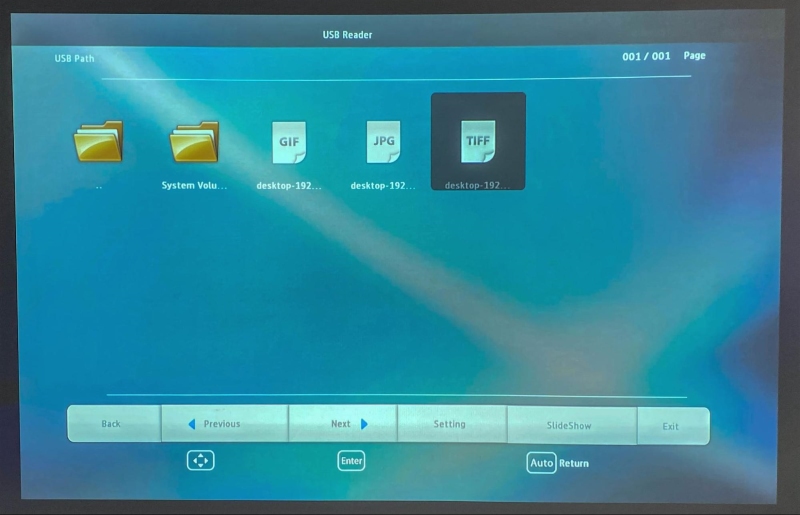
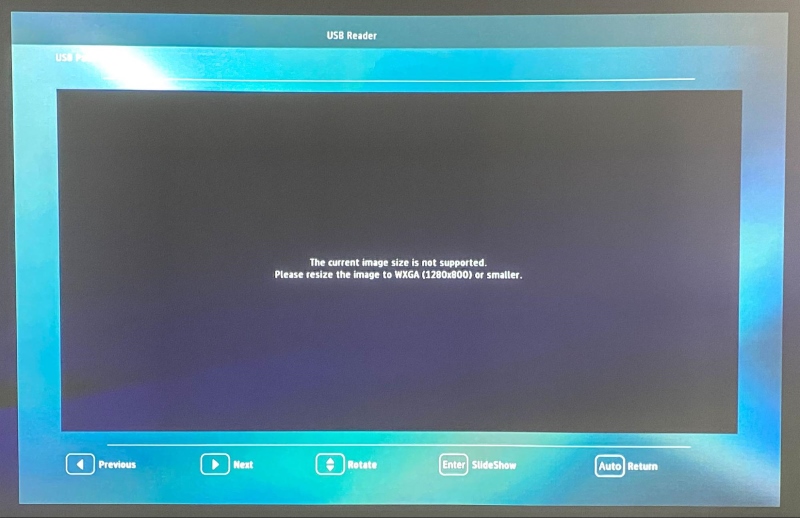
What did I do then? I resized the picture to the supported size.
I changed the image’s dimensions to 1000 x 563 pixels on my computer and transferred the edited picture to my USB drive again.
And when I tried loading up the picture again on my projector, it did so without any hiccups.
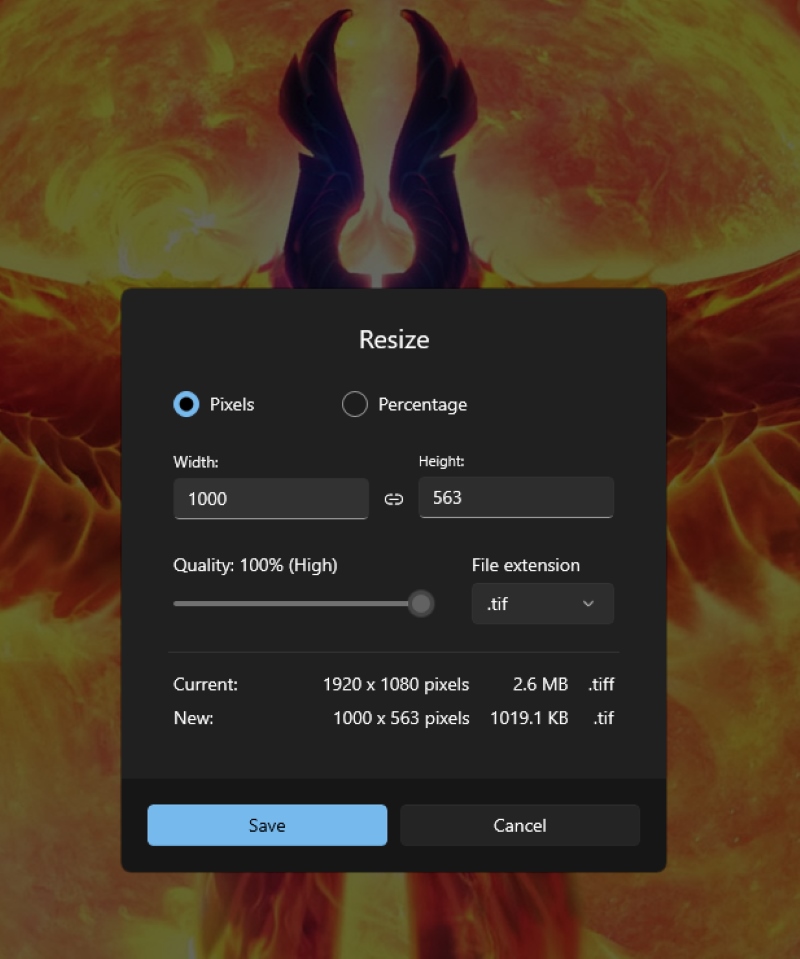
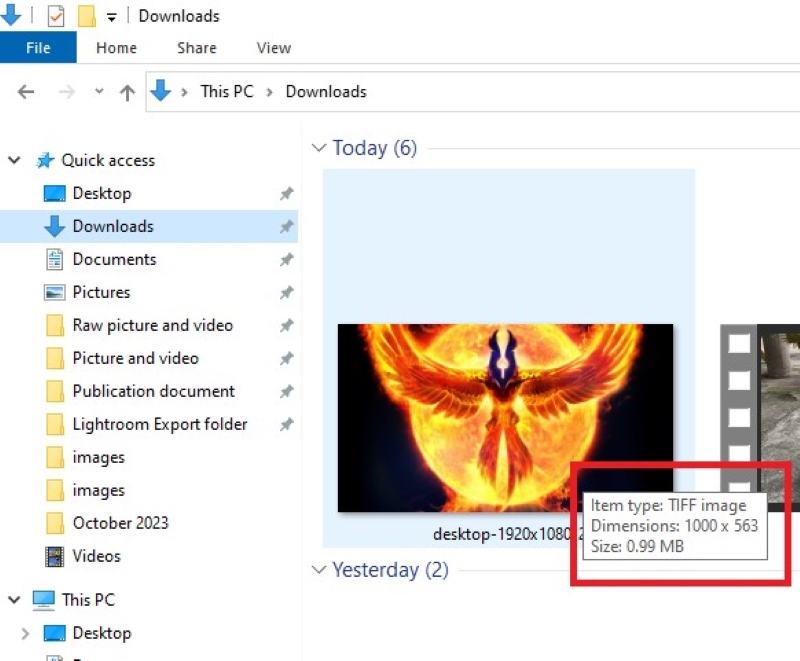
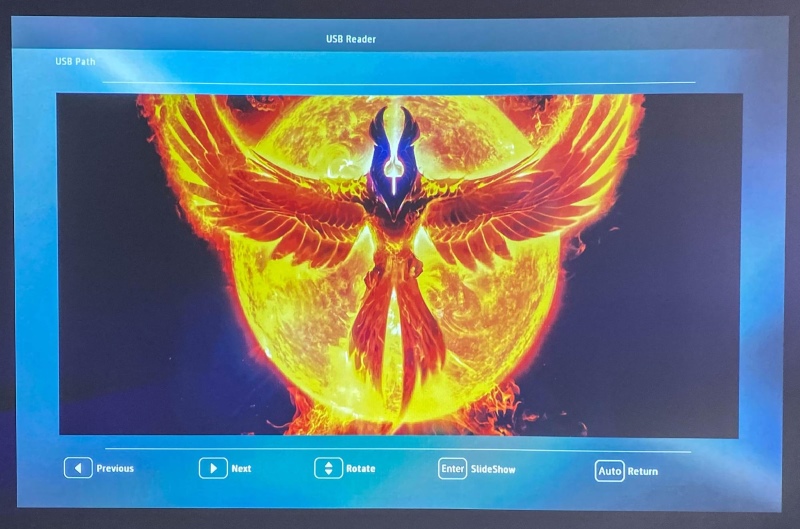
Also, I loaded some videos onto my memory stick to confirm my projector doesn’t support video files.
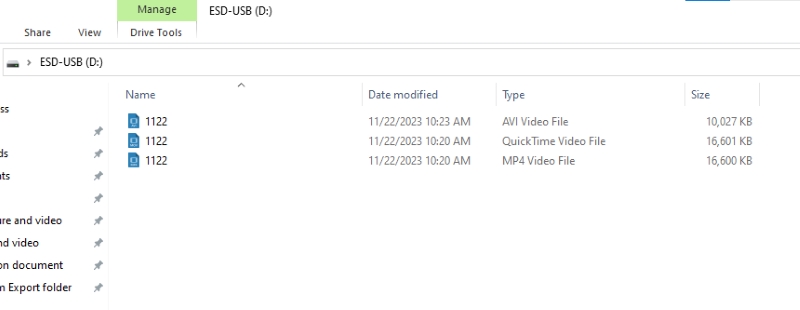
I then inserted the USB drive into my projector only to see no video files on the screen, confirming zero support for videos.
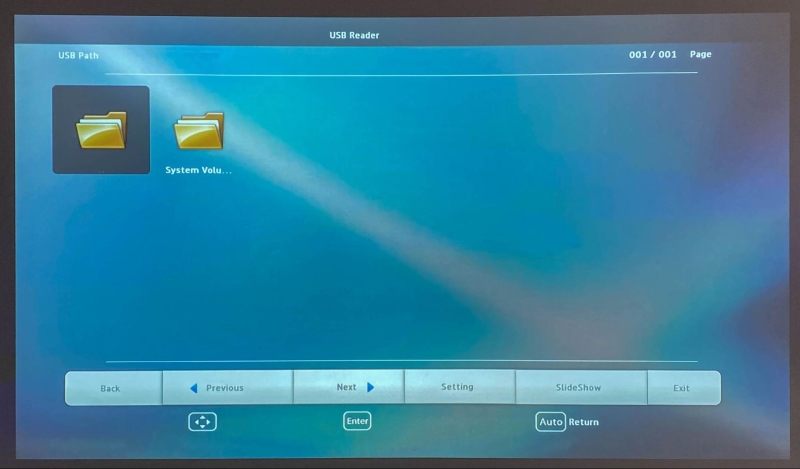
It’s advised to always check the file formats your projector supports to save energy and spare yourself a harrowing time while trying to play an incompatible file.
Peruse your device’s user manual, which can be found in the product box or online as a soft copy.
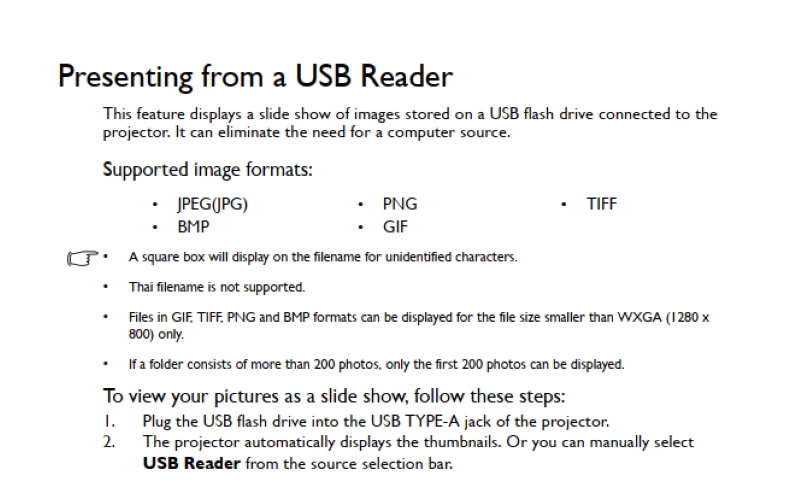
FAQs
1. Why Can’t All Projectors Support All Video and Image File Types?
Not all projectors can accommodate all video, picture, and audio file formats because they carry specific inherent hardware (processing power, decoding capability, etc.) and software constraints.
There could be other reasons, too. For instance, royalties or licensing fees could prevent manufacturers from incorporating support for specific media file type(s) into their devices.
2. What are Some Standard Media File Types that Projectors Support?
The image formats standard across projectors are JPEG, PNG, BMP, TIFF, etc. The different video file types include MP4, MKV, MOV, and AVI, to name a few.
Again, go through your projector manual to learn the media file types, codecs, specifications, etc., that the device supports precisely.
Conclusion
Using a USB drive with a projector is usually as straightforward as inserting the stick into the device and playing the loaded content.
But, as clearly explained above, things don’t work that way always.
Hopefully, you now have a clear idea of why sticking a flash drive into your projector doesn’t always function, the reasons for that, and what you could do to rectify the problem.
In the improbable scenario wherein you’re still experiencing trouble, contact the manufacturer.
Catherine Tramell has been covering technology as a freelance writer for over a decade. She has been writing for Pointer Clicker for over a year, further expanding her expertise as a tech columnist. Catherine likes spending time with her family and friends and her pastimes are reading books and news articles.


but the usb port input choice is dimmed